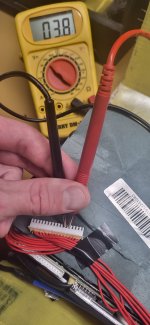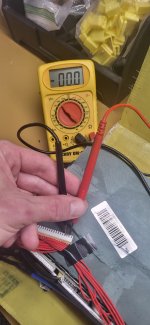probably_autistic_08
1 mW
- Joined
- May 11, 2021
- Messages
- 15
I have a Kaabo Wolf Warrior 11+ 60v with the TRONIC 250 VESC performance package/upgrade kit, here's the problem.
I took the scooter out for a ride, battery was at 93% (I left room for the regen braking) and about 1/4 from my house it shut off while I was riding it (~25mph, pretty slow). When I got home I found that the battery wouldn't charge and it wouldn't output any power but when I connected it to the power meter it still showed the battery had ~91% battery left (67.8v). If I plug the battery into the charger, it will not charge BUT if I connect the battery to the controllers, then connect both chargers to the battery and then connect the chargers to an outlet, the controllers will turn on (this is the only way that I know of to connect the VESC tool to the controllers when experiencing battery problems) and then when I check the VESC tool it will show the battery info. If I turn the throttle, the motors will go but you can tell the motors are being powered by the charges weak output of 68.8v @ 1.5a so it's not much.
I tried jump-starting/waking up the battery via the charger ports to no avail.
If anyone had to guess, would you have to agree that the BMS is possibly fried? Does anyone know if there's a fuse that might have blown inside the battery that could be replaced? Thank you for your help!
I took the scooter out for a ride, battery was at 93% (I left room for the regen braking) and about 1/4 from my house it shut off while I was riding it (~25mph, pretty slow). When I got home I found that the battery wouldn't charge and it wouldn't output any power but when I connected it to the power meter it still showed the battery had ~91% battery left (67.8v). If I plug the battery into the charger, it will not charge BUT if I connect the battery to the controllers, then connect both chargers to the battery and then connect the chargers to an outlet, the controllers will turn on (this is the only way that I know of to connect the VESC tool to the controllers when experiencing battery problems) and then when I check the VESC tool it will show the battery info. If I turn the throttle, the motors will go but you can tell the motors are being powered by the charges weak output of 68.8v @ 1.5a so it's not much.
I tried jump-starting/waking up the battery via the charger ports to no avail.
If anyone had to guess, would you have to agree that the BMS is possibly fried? Does anyone know if there's a fuse that might have blown inside the battery that could be replaced? Thank you for your help!



